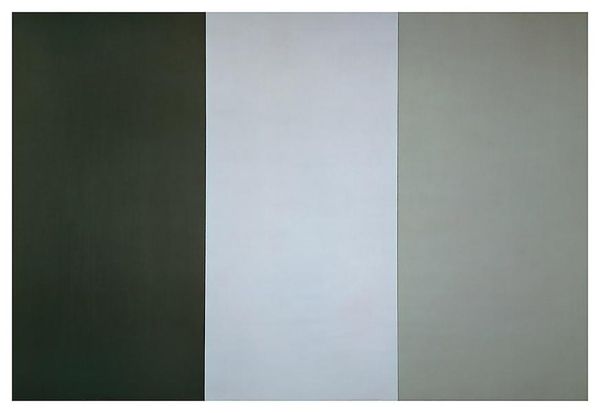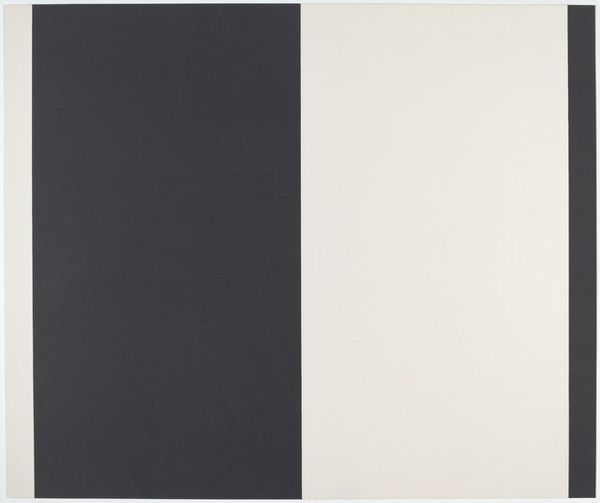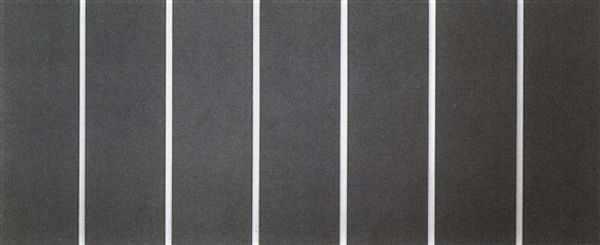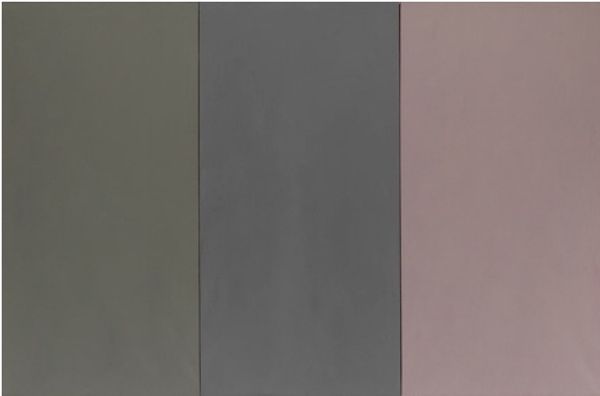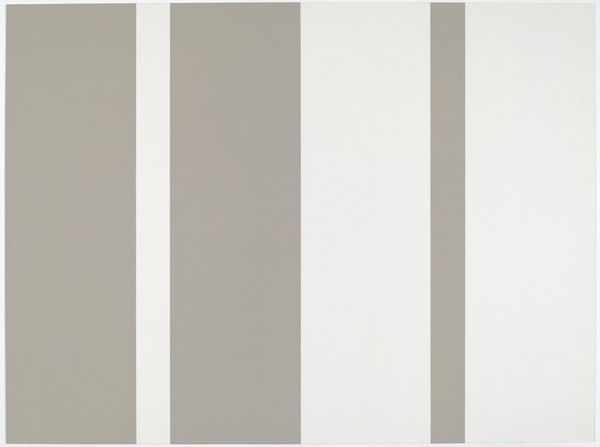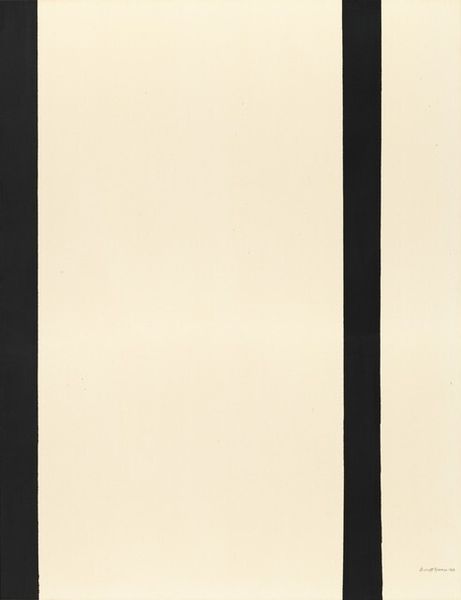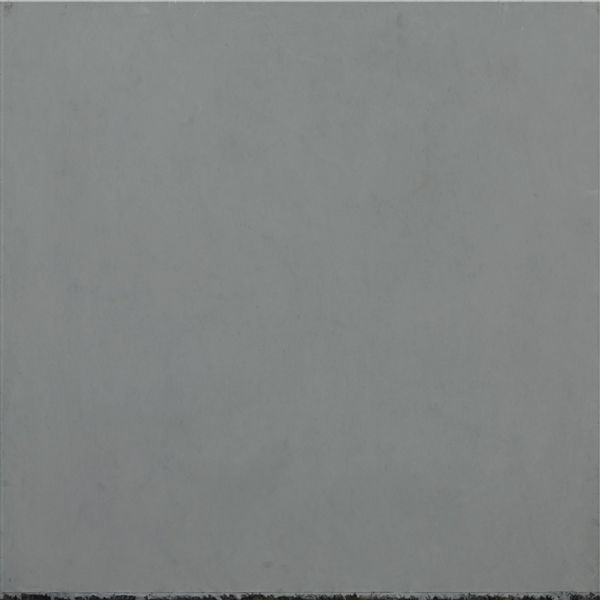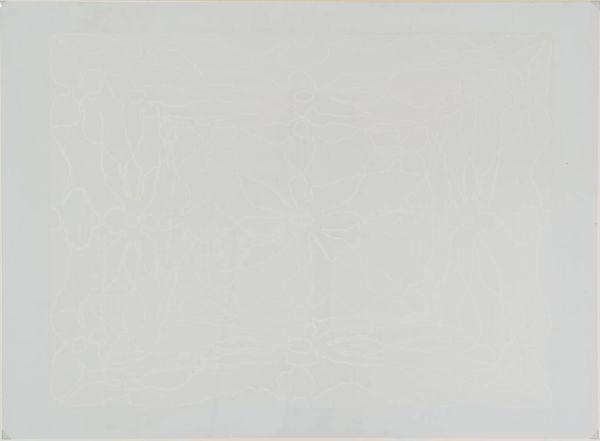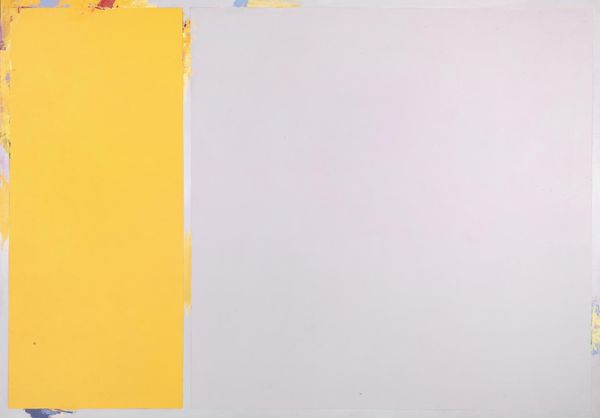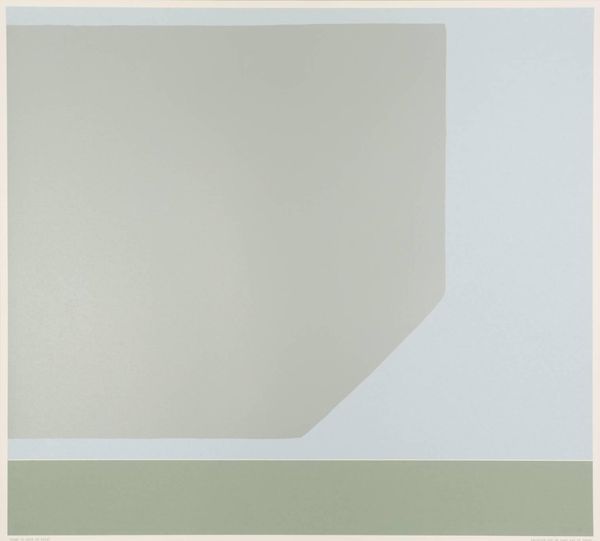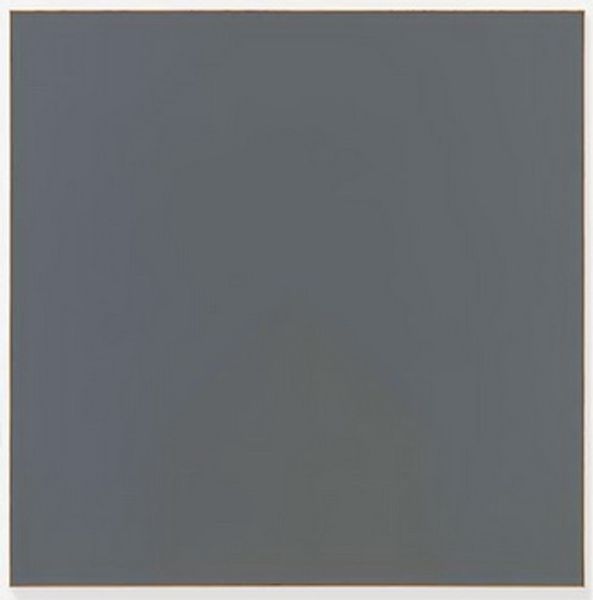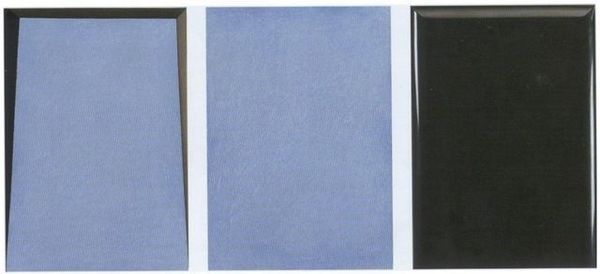
painting
#
abstract-expressionism
#
monotone colours
#
painting
#
form
#
abstraction
#
monochromatic limited colours
#
pale shade
#
hard-edge-painting
#
monochrome
Copyright: Brice Marden,Fair Use
Curator: Immediately, I’m struck by the somber tranquility it exudes, a serene juxtaposition that invites quiet contemplation. Editor: Indeed. This is Brice Marden’s "Au Centre," created in 1969. It is an example of his monochrome explorations in the hard-edge painting style. The composition hinges on two rectangular planes rendered in subtle variations of gray, a fascinating dance between color and form. Curator: Gray holds such a complex position within our collective psyche. It's often seen as neutral, even bland. Yet here, Marden uses it to create something quite affecting. The variations in shade invite the viewer to see the multitude of gray's potential meanings. Editor: Absolutely, the vertical division lends itself to semiotic interpretations. The opposition creates a tension; each side seems to hold its own weight, engaging in a silent conversation with the other. Notice how Marden's application retains slight variations; these micro-textures animate each plane. Curator: And those textural nuances further evoke the patina of time itself, similar to weathered stone tablets or timeworn parchment. Could we perhaps view these two columns of subtly different color as representing memory versus oblivion? There's a quiet visual echo of ancient steles, hinting at historical continuity. Editor: That’s a very evocative reading. Speaking in formalism terms, it showcases a minimalist ethos. Marden reduces the picture plane to its essential elements: color, line, and surface. The composition achieves equilibrium through proportion, despite its off-center balance. The subtle shift from left to right engages the viewer through movement and counterpoint. Curator: Perhaps those slightly variant grays can also be read as representative of the inherent mutability of existence, reflective of Heraclitus's adage that "no man ever steps in the same river twice." After all, perception itself transforms reality; shades imperceptibly altered over time. Editor: Marden creates not just an image but a dynamic situation that reflects on vision and invites perception to become action, wouldn’t you say? The effect, despite being so stark, leaves a lingering feeling of quiet yet firm authority. Curator: The more I ponder it, the more it resonates—it is like gazing into the twilight hour, witnessing an ethereal bridge between day and night. Editor: Indeed, and through this stark simplicity, Marden provokes us to consider the potential for transcendence inherent in the purely abstract.
Comments
No comments
Be the first to comment and join the conversation on the ultimate creative platform.
